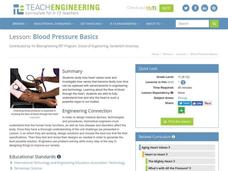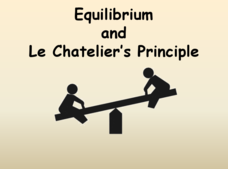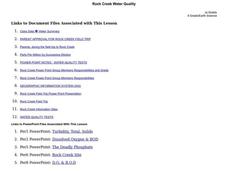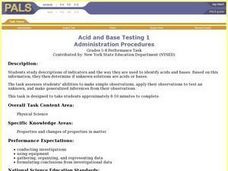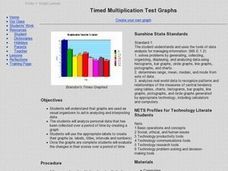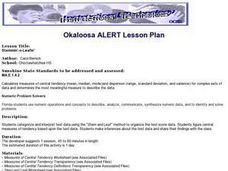Institute of Electrical and Electronics Engineers
Cast Your Vote
In a simple but unique lesson plan, youngsters learn about the history of voting systems. They then collaborate in groups to develop a new honest and consistent voting method. A class-wide poll is taken, evaluating the designs of other...
Teach Engineering
Blood Pressure Basics
Under pressure! The second lesson of the series introduces the class to blood pressure and the impact of high blood pressure on the cardiovascular system. It helps learners make the connection between blood pressure and how the heart...
West Contra Costa Unified School District
Multiplying Binomials and Factoring Trinomials
Two lessons for the price of one! Learners use algebra tiles to multiply binomials in the first instructional activity, Next, they use their knowledge from the first instructional activity to factor trinomials into two binomials.
Channel Islands Film
Dark Water: Lesson Plan 1 - Grades 3-4
As part of their study of the history of the Channel Islands, class members craft an informational article to post on a bulletin board that features the Chumash ancestral tradition of tomol paddling.
Discovery Education
Future Fleet
Turn your pupils into engineers who are able to use scientific principals to design a ship. This long-term project expects pupils to understand concepts of density, buoyancy, displacement, and metacenter, and apply them to constructing a...
University of Colorado
Planetary Distances on the Playground
Earth is 149,600,000 km, or 92,957,130.4 miles, from the sun. Young astronauts create an interactive model to learn the distances between planets. Nine groups, each representing a different planet, are spread around at class-calculated...
Cornell University
Alka-Seltzer Rockets
Blast off! An engaging hands-on activity has pupils create rockets powered by Alka-Seltzer. They learn about the physics behind these rockets throughout the process.
Alabama Learning Exchange
Classifying Complex Numbers
Imaginary numbers are a real thing. Scholars learn about complex numbers, real numbers, and imaginary numbers. They classify given numbers as strictly complex, strictly real, or strictly imaginary in an individual or group activity.
Science Geek
Equilibrium and Le Chatelier's Principle
Time to shake up the status quo with a presentation that describes Le Chatlier's Principle and has pupils examine situations in which equilibrium is upset. Four examples show different stresses to the reaction and the resulting shift.
New York State Education Department
Comprehensive English Examination: August 2012
Looking for a resource to wrap up all English skills in one? Here's a comprehensive resource that includes listening and reading passages, responding to poems, writing an essay, and analyzing a quote. The packet includes passages and...
Curated OER
Rock Creek Water Quality
Ninth graders test water in a local creek using chemical kits and probes. They take GPS readings and digital photos. They calculate the Water Quality Index and create a spreadsheet of the test data.
Curated OER
Rock Creek Water Quality
Ninth graders test water in a local creek using chemical kits and probes. They take GPS readings and digital photographs. They calculate the Water Quality Index and create a spreadsheet.
Curated OER
Synonyms and Antonyms
Fourth graders access a website to take a quiz on synonyms and antonyms and then complete an activity on the two. They write their own sets of synonyms and antonyms and take a post-test.
Curated OER
Acid and Base Testing
Students study descriptions of indicators and the way they are used to identify acids and bases. They use this information to determine if unknown solutions are acids or bases.
Curated OER
Testing Soils for Garden Planting
Sixth graders collect soil samples and record the location of the samples by using GPS.
Curated OER
GREETINGS AND LEAVE TAKINGS
Learners respond with memorized answers to questions that use familiar language. They ask basic memorized questions and imitate sounds and words with age- and stage- appropriate pronunciation. They Use the appropriate interpersonal...
Curated OER
Timed Multiplication Test Graphs
Learners use the tools of data analysis for managing information. They solve problems by generating, collecting, organizing, displaying histograms on bar graphs, circle graphs, line graphs, pictographs and charts. Students determine...
Curated OER
Hidden in Plain View: History Standard Two and the Underground
Eighth graders create a quilt based on the Underground Railroad quilt code from the book Hidden in Plain View: A Secret Story of Quilts and the Underground Railroad.
Curated OER
Testing Carving Tools
Students onstruct an ancient bow drill and compare its effectiveness at carving stone to marks made by other tools. They perform a careful analysis of the performance of each tool.
Curated OER
Stemmin'-n-Leafin'
Students make stem and leaf charts to determine the measures of central tendency using test score data. They analyze the data to draw inferences which they share with the class. They complete the associated worksheets.
Curated OER
Book Search
Fourth graders are introduced to how to use the Dewey Decimal System in libraries. After taking a pre-test, they complete a worksheet in which they determine the location of different books on the internet and on the shelf. To end the...
Curated OER
Writing a Research Paper
Students work through the steps of writing a research paper in this lesson. They define their problem and decide what sources of information to use. They read, take notes, and organize the collected data. Finally, they write the...
Curated OER
Forest Stewardship
Students define the term forest stewardship and they identify good forest stewardship practices. They are asked:"Does anyone enjoy spending time in the woods?" Students identify techniques of practicing good forest stewardship (taking...
Curated OER
Personal Learning Profile
Young scholars, after completing a Personal Learning Profile pre-test Survey, take a Personal Learning Profile pre-test. They explore personal interests, spiritual beliefs, strengths, needs, and habits. The questionnaire is completed on...

